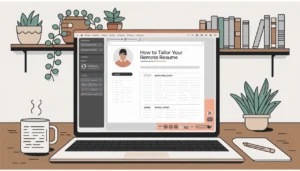Have you ever experienced the frustration of a project that didn’t meet your expectations? It’s a common occurrence, but it can be avoided through effective client expectation management. Failing to Managing Client Expectations can lead to dissatisfaction, lost business, and even legal disputes. By understanding and addressing client needs, communicating effectively, and setting realistic expectations, businesses can foster stronger relationships, increase client satisfaction, and ultimately achieve greater success.

Understanding Client Expectations: The Key to Success
The key to client relationships is that expectations should be well understood, not just in meeting all the requirements but indeed in being atop of things and, indeed building a partnership. That critical tool is active listening.
Active listening is more than just listening to the words said. It includes giving people your full attention, asking questions for clarification, and showing that you care. Then the bottom line would be about truly understanding what the client needs, so that you approach their particular situation in a way tailor-made to exceed his expectations. A good active listener must listen not only to what a client says but also observe his body language or tone in voice.
Another important factor in the management of client expectations is communication. Clear and straightforward communications can make all parties be on the same page. Avoid using jargons and special terms that confuse your clients. Instead, use simple language that is easy to understand. Written communications like emails and contracts have to be clearly structured and to avoid having any grammatical or spelling mistake.
Set realistic expectations so that you are not disappointing and losing the trust of a client. Over-promising and under-delivering waste the confidence of your client. Be honest about what your team and your project can do, and what they can’t. Refrain from promising something you cannot guarantee to fulfill. Deliver what you say you can, and aim higher as often as you can.
By being more attentive to your clients, effective communication, and realistic expectations that you set with your clients, you will be able to strengthen relationships with them and satisfy them. Such outcomes will finish with successful projects; however, longer term, they form a great background for partnership.
Proactive Communication: Building Trust and Managing Expectations
Communication with clients is the main point in any successful client relationship: it develops trust, openness, and mutual understanding of project aims. It leaves proper satisfaction of clients and success of the outcomes. Let’s take a closer look at why updates should be regular, concerns addressed promptly, and how the use of project management tools in communication can be a basis for effective communication.
Regular Updates: Keeping Clients in the Loop
Consistent and timely updates are very key factors for client engagement and confidence. This is furthered through providing consistent updates so that greater confidence can be built and clients updated on the development, achievements, and any problems being encountered.

The updates should be project-related and also whatever is preferred by the client. Every week, there could be the status report, or in some phases, frequent updates could be necessary.
Content: It must have all the information that would be used — a task completed, a milestone to be achieved, problems encountered, and what was implemented to overcome them — with the addition of visual aids such as timelines or progress bars in order to understand better.
Communication Channel: Choose the appropriate communication channels for your clients, which may include emails, phone calls, video conferencing, or even project management software. Ensure that the updates are clear and concise and must be easily digestible.
On-time Response to Questions, Concerns, or Requests, Building Trust and Confidence
At the time of conducting a project, questions, concerns, or requests from the clients may surface. Their response should not be late because this portrays a client’s responsiveness and devotion to a client’s satisfaction.
Active listening: give your time to your client when the issues arise. Listen actively to their views and question out for clarification to clearly understand what worries them.
Empathy and understanding: empathize with the feelings of clients; let them feel that you comprehend the pain. Let them appreciate that your input is considered, and that you are working towards developing the solution to their current issues.
Respond timely: Respond to a client’s request even if you cannot provide all the information at that moment. Assure them that you are working on finding it and will share the result with them soon.
Application of Project Management Tools for Efficient Communication and Collaboration
Project management tools can be helpful in the communication and collaboration of project teams with clients. These tools offer features such as task management, exchange of documents, real-time updates, and a discussion forum.
Centralised platform: A tool for project management can be termed as a central online platform through which all information of the projects can be summed up and is self-contained so that the necessary documents are easily available for the clients.
Real-time update: Clients can see, in real-time, how much work has been done on projects using different features such as Gantt charts, Kanban boards, and progress reports.
Collaboration features: Most of the tools often have features such as chat, comments, file-sharing capabilities that enable a smooth communication exchange between the project teams and clients.
Version control: Changes can be tracked to document or deliverables, and project management tools ensure version control so that at every point in time, updates will be live for the clients to view.
Their proactive measures in communication, the raising of prompt concerns, and the use of effective project management tools help build strong relations with clients and manage expectations clearly to deliver successful projects.
Overcoming Challenges in Client Expectation Management
Handling Scope Creep

Scope creep is the most overwhelming problem in dealing with a client expectation of delivering things that were not in the original project plan, and which were added on the project after it has already started. How do you prevent scope creep?
Define the Project Scope: Define the project scope in a very detailed document that outlines the goals, deliverables, and timelines of the project.
Use a change management process: Put a formal process to follow when reviewing and approving any changes to the project scope.
Communicate often: Inform the clients on the progress of the project and changes that may occur along the way.
Scope creep occurs, then it will benefit one to deal with this issue immediately and professionally .
Evaluate the effect: Determine how the new feature or requirement impacts the project timeline, budget, and quality.
Negotiate with client: You can present the implications of the change with the client and together you can come up with a suitable compromise.
Revised project plan: Update the project plan with changes, such that the project can still be on track
Controlling Unforeseen Changes
At any given time, even in the execution of a project, there could be unforeseen changes. In such a case:
Have a contingency plan: You should have a plan for potential risks and challenges.
Communicate proactively: Communicate with the clients regarding change and change impact on the project.
Be flexible and adaptable: Be prepared to change the plan of your project whatever may have changed.
Being proactive and prepared you can minimize the adverse effects that unexpected changes will cause to the expectations of the client.
Conflict Resolution
There can be conflicts between the clients and the teams working on the projects for a wide range of reasons. To handle conflicts in a constructive way:
Active listening: Hear out what is bothering the client carefully and try to see things from their point of view.
Show empathy and demonstrate understanding of the client’s feelings.
Open and frank communication with the client for finding a mutual ground.
Compromise to find a solution: The compromise would be one that is especially designed to suit the needs of both parties, such as the client.
On the other hand, approaching conflicts with a positive attitude is expected to give you an opportunity to tackle such conflicts and never let your relationships down with the clients.
Building Trust: A Cornerstone of Client Relationships
- A good and successful relationship between a client and the servicing party depends on trust. Satisfied, loyal, and referring clients are highly probable if the clients trust their service providers. Here are some tips that can help you gain your clients’ trust:
- Be transparent and honest: Open communication is an avenue to build trust. Discuss your capabilities, limitations, and expectations. Avoid promising something you cannot deliver on. Be candid when faced with setbacks or failure.
- Make promises and keep them: This simply means not making any promises unless you can uphold them. Deliver on your commitments and meet deadlines. Consistent quality delivery enhances and builds trust and credibility.
- Be responsive: Respond to your clients’ inquiries and concerns on time. Be professional and show that you value their time and feedback.
- Show expertise: Highlight your area of expertise, with experience and knowledge that can make a client feel more confident in your abilities and expertise.
- Be proactive: Not only should you be alert and sensitive to the needs that are going to arise but also ahead in solving the problems that the clients may not yet ask for.
Empathy and Understanding: Putting Yourself in Your Client’s Shoes
- Empathy refers to the ability to walk in the shoes of another person. In other words, you can understand what the other person feels and shares these feelings. The way to go to understand your client fully is to stand in their shoes. Here are some tips on developing empathy and understanding:
- Active listening: Pay close attention to what clients are saying both verbally and non-verbal. Ask clarifying questions and show that you are genuinely interested in their concerns.
- Acknowledge their feelings: Let them know you understand their side of the story too. Make your clients feel you are behind them by listening and letting them know that their feelings are valid.
- Develop empathy: Let your clients know that you genuinely care for their success and well-being. It is just a simple word or gesture towards this.
- Be patient: Ensure your clients have enough time to express themselves on what they think or how they feel. Do not interrupt them or rush over.
- Be open-minded: Open-mindedness is quite significant because there should be an ability to embrace diverse ideas and approaches. This can make you discover solutions that are mutually beneficial.
Continuous Improvement: Striving for Excellence
Continuous improvement keeps client satisfaction on a high and will also manage expectations from your clients. The following are suggestions for a culture of continuous improvement:
Seek feedback. Ask your clients regularly to give you their views regarding the services you undertake. Use this knowledge to find areas with potential for improvement.
Learn from mistakes. Analyze past mistakes and do whatever it takes to ensure they don’t repeat themselves.
Stay updated: Know about the current trends and best practices within your industry. This will enable you to offer the most effective services possible.
Invest in Training: Provide opportunities for your team members to acquire new skills or knowledge. This will make your team member develop, allow them to improve in performance, and satisfy the clients.
Celebrate Successes: Appreciate the achievements of your team members. Recognition and rewards will sustain the work environment as positive and motivating.
Following these tips will make sure building stronger relationships with the client, efficient management of their expectations, and most importantly, long-term success.
Conclusion
The efficient management of expectations forms the crux for building sound relationships as well as the project’s successful outcome. Active listening, clear communication, and realistic expectations set forth all form part of the development of trust, thus preventing possible misunderstandings. Proactive communication, thereby settling any concerns instantaneously, and the right use of tools for project management further increase client satisfaction. It requires collaboration and problem-solving skill to overcome scope creep and unexpected changes. Last but not the least, it is worth noting that managing client expectations effectively requires establishing trust and empathy. In addition, continuous improvement is essential.
Take these tips and strategies for creating even stronger client relationships and exceptional results by following what we covered today in this blog post. What you learn about understanding client needs and proper and open communication, as well as being proactive on concerns, will surely be worthwhile. Are you ready to change the game in interactions and cement long-term success?
Here are some tips to write an effective blog post: Use real-world examples to support your message. For instance, you can narrate a story or experience that you can appropriately meet the expectations of a client or an account of a company which was facing some problems in regard to poor management of expectation. Some images, infographics, or diagrams will help in bringing out the message with ease and make your content exciting to read. Personalize your content according to the needs of the target audience as well as what they are interested in. You might consider their industry, role, and pain points. Finally, share your blog on social networks and other platforms so that it reaches more people and those targeted audiences.
FAQ: Managing Client Expectations
General Questions
Why do we have to manage client expectations?
Managing expectations helps build trust, avoid misunderstanding and ensures satisfaction. Moreover, it could have a cause towards more successful projects and a long-term connection with the client.
What are some of the most common mistakes that one can commit in managing client expectations?
Overpromising and under delivering, poor communication, lack of clarity and not attending to concerns promptly, are some of the most common mistakes.
How would you take care of communication with your clients?
Clearly outline your work, listen attentively to a client’s needs, and keep track of the progress on the project. You can use visual materials, like a timeline or diagram that will help the client clear his mind on how you plan to operate.
Specific Challenges
How do you control scope creep?
Be able to clearly define project scope and make sure scope changes are clearly communicated to your client. In fact, you should identify ways changes to scope will impact on the timeline and budget of the project.
What should I do when I have a dissatisfied client?
Answer them promptly and sympathetically. Try to understand their point of view and find a solution together.
How can I avoid a conflict with the clients?
Build trust, maintain open communication, as well as set realistic expectations while trying to keep them clear in relation to any challenges that may arise.
How do I improve my level of client satisfaction?
Exceed the expectations of clients by doing quality work, yet provide great customer service and be responsive to your customer’s needs.







